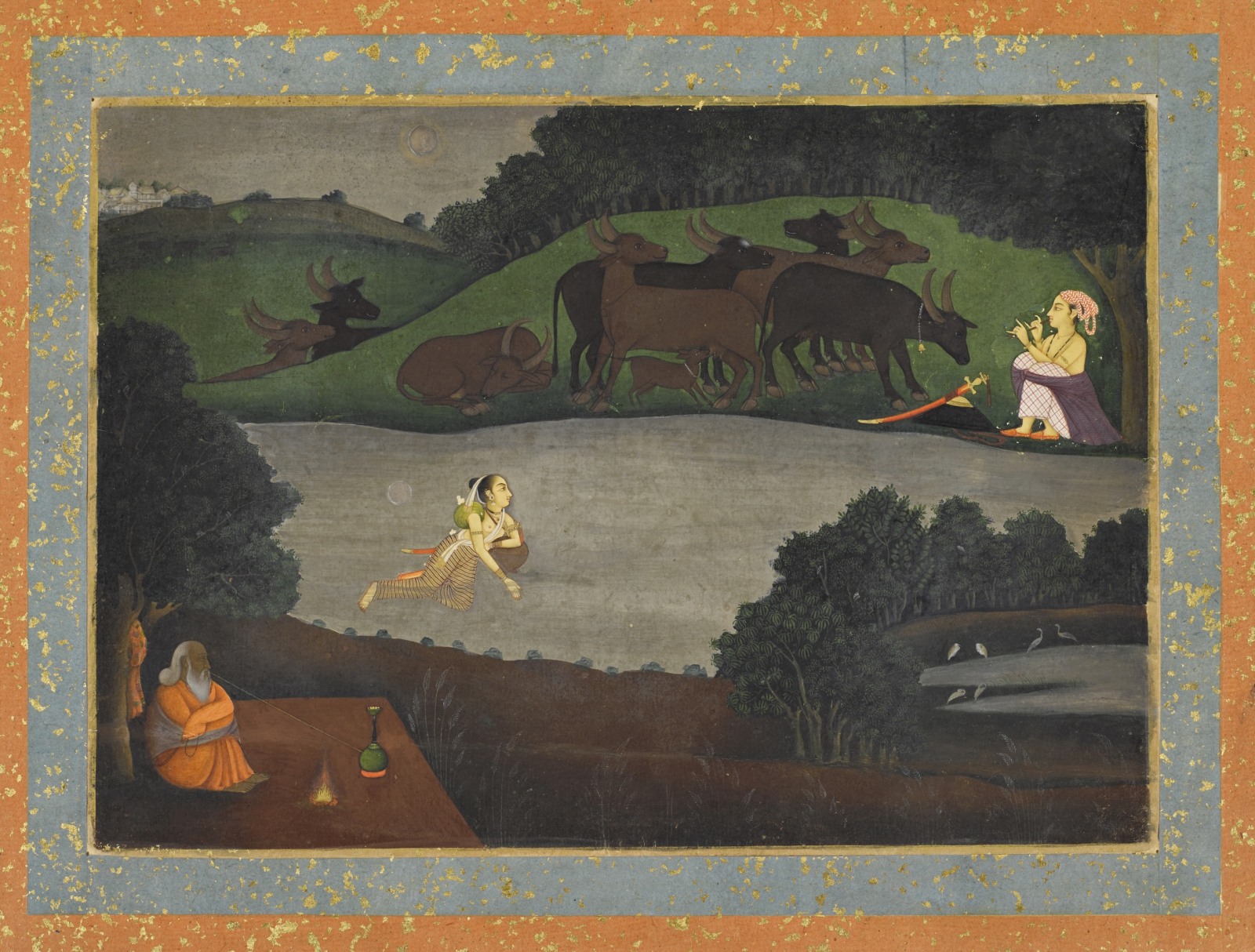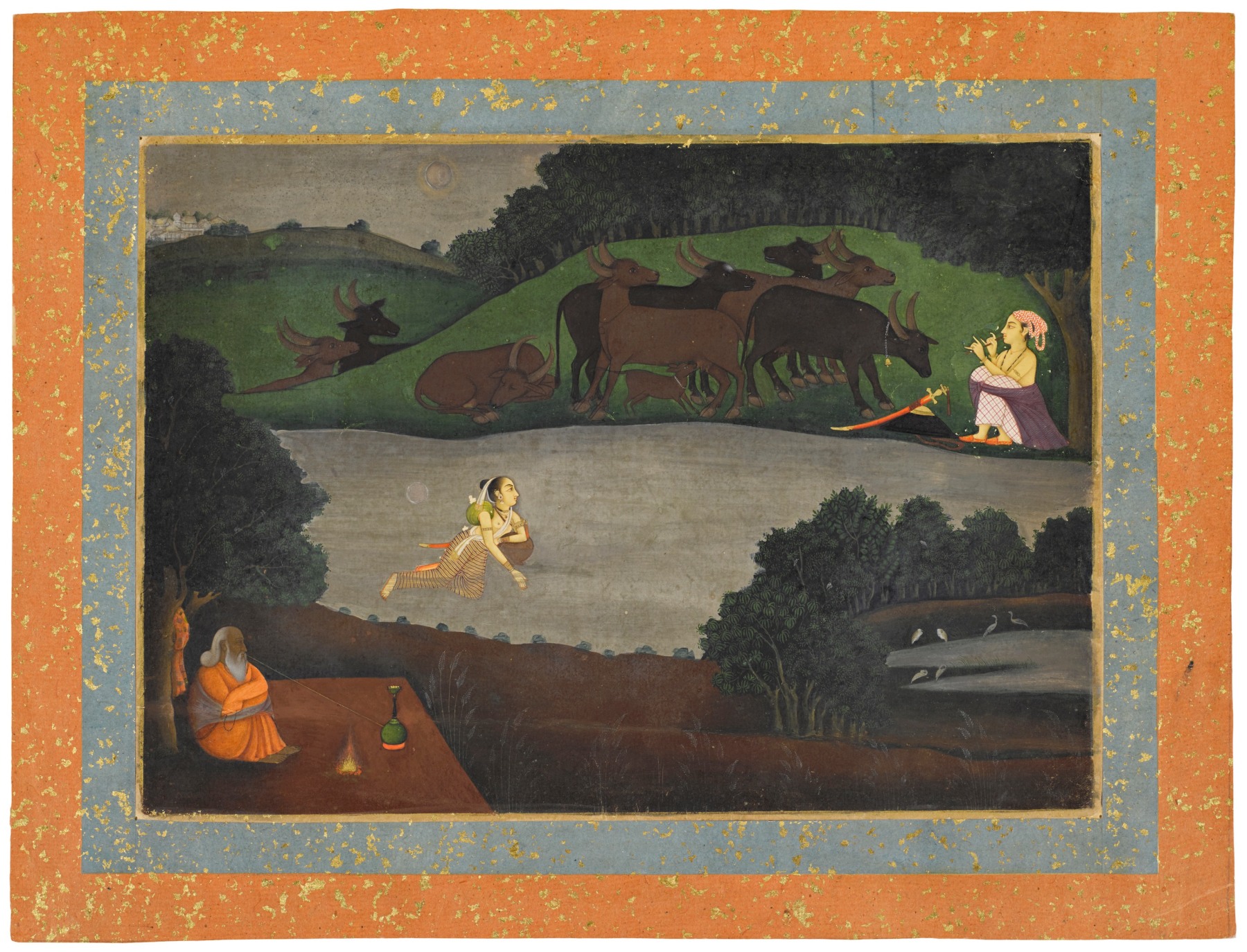
Provenance:
European Private Collection
The tragic love affair of Sohni and Mahinval is one of the favourite folktales of the Punjab. The story centers round the town of Gujrat on the Chenab river. The heroine Sohni comes from the Kumhar or potter caste, but she has fallen in love with Mahinval, another potter but an outsider as far as her parents are concerned, as he lives on the far side of the river Chenab. Sohni was married against her will to another local potter, but every night she swims across the river to where her beloved Mahinval herds buffaloes. She uses an earthenware pot to keep her afloat in the water and hides it in the same place every night.
Sohni is also beloved by Izzat Beg, a rich trader from Bokhara, who has come south on business and fallen in love with her from afar but stays so that he can still see his beloved. He has renounced the world and become a fakir living on the banks of the river. One night Sohni’s suspicious sister-in-law follows Sohni to the river and sees what Sohni is up to. She reports back to her mother, and the two women agree to deal with the problem by themselves without waiting for the return of Sohni’s husband, who is away on business. She replaces the earthenware pot with a vessel of unbaked clay, which of course dissolves in the water, and Sohni drowns. Her beloved jumps in to try to save her, but he drowns as well in the whirling waves of the river. The lovers are united in death.
This tragic story was a popular subject for paintings in the 18th century, both in Delhi and later in the provinces. The iconography is unvarying. The river divides the painting in two just as it has divided the lovers. On the far side sits Mahinval playing his pipe guarding his buffaloes, his sword in front of him for protection. Sohni is in the river clinging on to the pot as she kicks her way across. Her clothes are tied up in a bag, and she too has a sword. On the near side sits the fakir Izzat Beg watching, smoking from a hookah, with his patchwork robe slung over a branch. It is night, of course, and dark, but the scene is illuminated here by a moon presently obscured by thin cloud, which is also reflected in the river. The two principal characters are still fully lit by its light, but Izzat Beg is more in the shadow of a tree, although front-lit by the light from the fire. Although it is obviously a warm night, the fire is needed to ward off animals, just as the swords are needed for protection against human predators in the uncertain times of the 18th century.
The brilliantly-lit characters, despite the obscured moon and its being night-time, are typical of the style that developed in the middle of the 18th century at Murshidabad, the capital of the Bengal Nawabs. For two decades it flourished before Calcutta’s increasing dominance over Bengal caused the Nawabs to change their taste. Clearly some Murshidabad artists did not approve of the new arrangements and must have moved to Awadh by 1770 taking their drawings and charbas with them.

